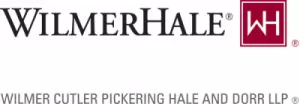- within Environment topic(s)
On May 22, 2025, the Supreme Court unanimously declined to limit federal wire fraud to cases involving economic loss to the victim, upholding convictions of two government contractors who obtained contracts from a state agency by misrepresenting that they would comply with the agency's requirement to use certain suppliers in performing the work.1 The Court stressed that even without an economic-loss requirement, however, federal fraud statutes require that a misrepresentation be material before it becomes actionable—a standard that Justice Clarence Thomas's concurrence suggests might not be easy to meet in some false-certification cases. This alert summarizes the decision in Kousisis v. United States and its potential implications for government contractors.
Background
Kousisis involved contracting under a state program that required bidders to commit to subcontracting a certain percentage of the total contract amount to a disadvantaged-business enterprise (DBE). The Pennsylvania Department of Transportation (PennDOT) awarded petitioners—an industrial-painting company and its owner—two contracts to repair bridges in Philadelphia. As part of their contracts, petitioners were required to subcontract with a DBE to obtain paint supplies.2 Instead, they used a DBE as a pass-through entity while obtaining supplies from nonqualified companies.3 After a jury convicted them of wire fraud, petitioners sought acquittal on the ground that the government could not prove they had defrauded PennDOT out of "money or property" (as required by the wire fraud statute) because PennDOT had received the full economic value of the contracts.4 The district court upheld the convictions, and the Third Circuit affirmed.
No Economic-Loss Requirement for Wire Fraud
The narrow question before the Supreme Court was whether a federal wire fraud conviction for fraudulently inducing a party to enter into a transaction requires proof of financial harm to the victim. Petitioners argued that the government must prove intent to harm the victim financially. The Court rejected that argument, holding that "the wire fraud statute is agnostic about economic loss."5 Thus, although the statute requires proof that the defendant participated in a scheme to obtain property or money by false pretenses, it does not require proof that the defendant sought "to leave the victim economically worse off."6 The lack of an economic-loss requirement, the Court reasoned, is consistent with both the text of the wire fraud statute and the common-law understanding of fraud that it incorporates, which did not limit a fraud victim's injury to pecuniary loss but instead broadly encompassed any "deprivation of money or property under materially false pretenses." 7
Materiality as a Limitation on Federal Fraud Statutes
In addressing concerns that its decision would risk transforming every misstatement in connection with a transaction into fraud, the Court emphasized that federal fraud statutes separately require proof that a falsehood was material.8 Because materiality was uncontested, the Court did not address the applicable standard for wire fraud or whether it was met in this case. Notably, the government itself defended the convictions here by arguing that the "rigorous materiality standard" from Universal Health Services, Inc. v. United States ex rel. Escobar, 579 U.S. 176 (2016)—the Court's leading decision on materiality in False Claims Act (FCA) cases involving false certifications by government contractors—applies to the federal criminal property-fraud statutes and mitigates their potential breadth by limiting prosecutions to misrepresentations that "go to the essence of the bargain."9 The Court's brief discussion of materiality, while reserving judgment on this element, relies heavily on Escobar and makes clear that, whatever standard applies, materiality is "demanding" and should serve to significantly limit the universe of actionable misrepresentations in future cases.10
Justice Thomas, who authored Escobar, filed a concurring opinion in Kousisis urging lower courts to hold the government to its word and strictly enforce the materiality standard.11 Like the Court's opinion, Justice Thomas's concurrence does not express "a definitive view" on whether materiality in the criminal wire-fraud context is identical to the standard set forth in Escobar for civil false-certification claims under the FCA. But the FCA standard, he concluded, is at least "a useful baseline."12
Justice Thomas's concurrence also identifies several reasons for "skepticism" that materiality (although undisputed) was in fact established in this case.13 First, the contracts at issue were for bridge repairs, not minority hiring, and thus petitioners' misrepresentations about their DBE compliance arguably did not go "to the very essence of the bargain."14 Second, and relatedly, the contracts required PennDOT to deduct from petitioners' pay for untimely or subpar work, but they imposed no similar penalties for DBE violations.15 Third, assuming PennDOT fulfilled its end of the bargain despite knowing about widespread DBE violations, that fact would be "strong evidence" that DBE compliance was not material.16 Fourth, if the DBE requirements are unconstitutional—as at least one district court has held17 —that too could bear on their materiality to the government, which is presumed not to impose unlawful obligations on its contractors.18 And even though the contracts labeled the DBE provisions as material, Justice Thomas reiterated that materiality under Escobar ultimately "turns on substance rather than labels," and that other substantive factors like the ones above are therefore part of a "rigorous and context specific" materiality determination.19
Justices Neil Gorsuch and Sonia Sotomayor each concurred separately in the judgment. But Justice Gorsuch disagreed with aspects of the Court's injury analysis as well as its reliance on materiality as an alternative basis for cabining potential criminal fraud liability.20 And Justice Sotomayor took issue with both the Court's discussion of materiality and Justice Thomas's concurrence, explaining her view that even under the more-demanding standard set forth in Escobar, materiality was easily satisfied and rightly conceded below.21 According to Justice Sotomayor, the express designation of DBE compliance as a material term of the contract, the fact that it was a condition in turn of the federal funding PennDOT received to finance the projects, and the risk of serious legal consequences to PennDOT itself if it failed to administer the DBE program all demonstrated that the DBE requirements were essential to the contracts.22
Key Takeaways
The Supreme Court's decision in Kousisis underscores several points for government contractors and other recipients of federal funding to bear in mind:
- First, government contractors (and others) may be criminally liable for fraudulently inducing transactions involving money or property—regardless of whether they intend to cause economic loss to the government. In this way, Kousisis supports an expanded scope of potential liability under federal fraud statutes.
- Second, the Supreme Court once again confirmed that the materiality standard is "demanding" under federal fraud statutes, implying that not every term in a government contract or grant will be deemed material. In this regard, Kousisis may narrow the scope of liability with respect to terms or extrinsic legal requirements that do not go to the essence of the bargain or program—an issue that will be left for future litigation, as materiality was conceded in Kousisis itself.
- Third, Justice Thomas's concurrence provides an especially useful guide for parties contending with contract provisions advancing political objectives unrelated to the core purpose of the award, as he explains that "the Government's inclusion of political or regulatory requirements unrelated to the contracts' core purpose might simply reflect the Government's attempt to achieve policy goals by leveraging its unmatched bargaining position," rather than a material element of the arrangement.23
Footnotes
1 Kousisis v. United States, No. 23-909, slip op. at 1-2
(U.S. May 22, 2025).
2 Id. at 1.
3 Id. at 3.
4 Id. at 3–4.
5 Id. at 8.
6 Id.
7 Id. at 11–12 n.5.
8 Id. at 16
9 Gov't Brief 12, 17, 43–45, Kousisis v. United States, No. 23-909 (U.S. Oct. 2, 2024).
10 Slip op. at 19 (quoting Escobar, 579 U.S. at 194); see also id. at 15-16.
11 Id. at 12 (Thomas, J., concurring).
12 Id. at 6.
13 Id. at 6–11.
14 Id. at 6 (quoting Escobar, 579 U.S. at 194 n.5).
15 Id. at 7–8.
16 Id. at 8 (quoting Escobar, 579 U.S. at 195).
17 See Mid-America Milling Co., LLC v. U.S. Department of Transportation, No. 3:23-cv-72, 2024 WL 4267183 (E.D. Ky. Sept. 23, 2024).
18 Kousisis, slip op., at 10-11 (Thomas, J., concurring).
19 Id. at 11.
20 See id. at 9–11 (Gorsuch, J., concurring).
21 See id. at 3–4 (Sotomayor, J., concurring).
22 Id. at 5–6.
23 Id. at 6 n.1 (Thomas, J., concurring).
The content of this article is intended to provide a general guide to the subject matter. Specialist advice should be sought about your specific circumstances.







